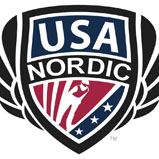
Testing and Choosing Race Skis at the Boulder Mountain Tour 2017
On a typical day in the Wood River Valley, you can pretty much bet on sunny days, cold nights, firm new snow and amazing grooming. But so far, this hasn’t been a typical year in Ketchum. Last week it didn’t seem to stop snowing, with about 20 inches accumulating on Friday and Saturday, it made for some interesting ski testing, and racing!
Testing
Whatever skis you may have in your bag, make sure the skis you test are all zeroed (same wax and prep on all). Test skis the day before race day on conditions that you think will mimic race conditions (as best as possible). The BMT is unique because the start and finish could be very different conditions, choose a spot to test skis that is going to give you an idea of what the snow will be up high at the start, and down at the finish. You can always test at multiple locations if you’re really keen, just be careful to not overthink things. This brings us to probably the most important part of ski testing, choosing which ski to race on.
If you have a good quiver of skis, chances are you’ll have two pairs of skis that feel similar on testing day. This is when you go with your gut feeling. If you’re thinking that one ski feels better than the other, but just a little bit…choose the better ski! In the end, if your skis are really so similar, it will not make or break your race. Take the skis that feel slightly better and wax those up for race day. Another option is to race wax both pairs and test them the morning of the race on the course when you know what the weather and grooming is looking like on the race course. Whatever ski you end up choosing, be committed to that ski!
Nick Hendrickson, 2016 Boulder Mountain Tour Champion
This is an excellent article written for SBX racers, but should be read by anyone who wants to improve at anything and have a positive experience
Self-Talk
By Cody Brown
Head SBX Coach SSWSC
One of the most important yet often overlooked aspects of mental game and success in athletics is, “Self-Talk.” In this eblast we will review the key concepts and the role self-talk plays in athletic performance.
With every new athlete that enters my program one of the first things we actively eliminate is negative self-talk. I often hear negative self-talk in response to feedback that is being provided to athletes. It usually sounds something like, “I am just not good at that technique” or “I just can’t do that.” The first thing that I do when I hear this kind of negativity is cut the athlete off to stop the negative self-talk. Then reframe the statement and try it again. The new statement would sound something like, “I am improving that technique,” or “that is something that I am working on getting better at.” If an athlete is verbally condemning their performance, it is almost a guarantee they are mentally doing it as well.
The underlying principle behind self-talk and its effect on athletic performance is simple. Your sub-conscious mind is indifferent to results and is essentially programed by your conscious mind. One of the first psychologists to explain this notion was Maxwell Maltz in his book ‘Psycho-Cybernetics’ . For example, if you persistently say (verbally or mentally), “I am not good at pumping transitions” that is exactly what your sub-conscious mind is going to produce. If you reinforce to your sub-conscious mind positive statements such as “I am working on getting better at pumping transitions,” you will, over time produce that desired result. A rule of thumb if you find yourself negatively criticizing yourself is, in order to eliminate one negative thought, you need to mentally or verbally say a reframed positive statement four times. One technique many athletes use is a “power statement”. If they catch themselves being negatively critical of their performance mid-run, they can force out the negativity by mentally saying the power statement of their choice four times immediately after. This statement can be as simple as “my technique is excellent” or “I ride with power and finesse.”
This also applies to outside influences as well. I make a conscious effort to speak to my athletes the same way I want them to speak to themselves. For instance, if an athlete is speed checking or slowing down before a jump, I will resist the temptation to say “don’t speed check!” But rather tell the athlete to “eliminate the speed check” or “after the first feature point it straight into the jump.” It is subtle but effective.
To sum up self-talk in three simple steps:
- Listen: Pay attention to what you are saying to yourself.
- Reframe: If negative, reframe the statement to be positive.
- Reinforce: Repeat the positive reframed statement.
- Achieving your goals is a process, so be nice to yourself and enjoy the journey.
USA Nordic signs strategic partnership with Toko
Park City, January 15, 2017
“USA Nordic is very pleased to announce that we will be working with Toko as our exclusive glove supplier for the Nordic Combined Team’s cross country racing for the 2017 season,” said Bill Demong, Executive Director of USA Nordic. “Toko has a long, distinguished history as one of the premiere Nordic brands and we are very excited to be working with their committed team.”
Toko US Brand Manager Ian Harvey commented, “Bryan Fletcher lives in Heber, Utah close to me and I have been impressed with him and his other teammates’ professionalism and commitment. It is my pleasure to support them.”
“Switching to Toko was a fantastic opportunity,” stated Taylor Fletcher, one of the top athletes on the USA Nordic Combined team. “The gloves have a great warmth to weight ratio. Due to their European sizing, the size increments are smaller such that we can achieve a perfect fit. I appreciate the personal touch that Ian has given the gloves as well as to our team”.
USA Nordic is the parent organization for USA Nordic Combined and USA Ski Jumping and is based in Park City, Utah. To stay connected with all of the USA Nordic Combined athletes, please visit www.usanordic.org and subscribe to our newsletter!







